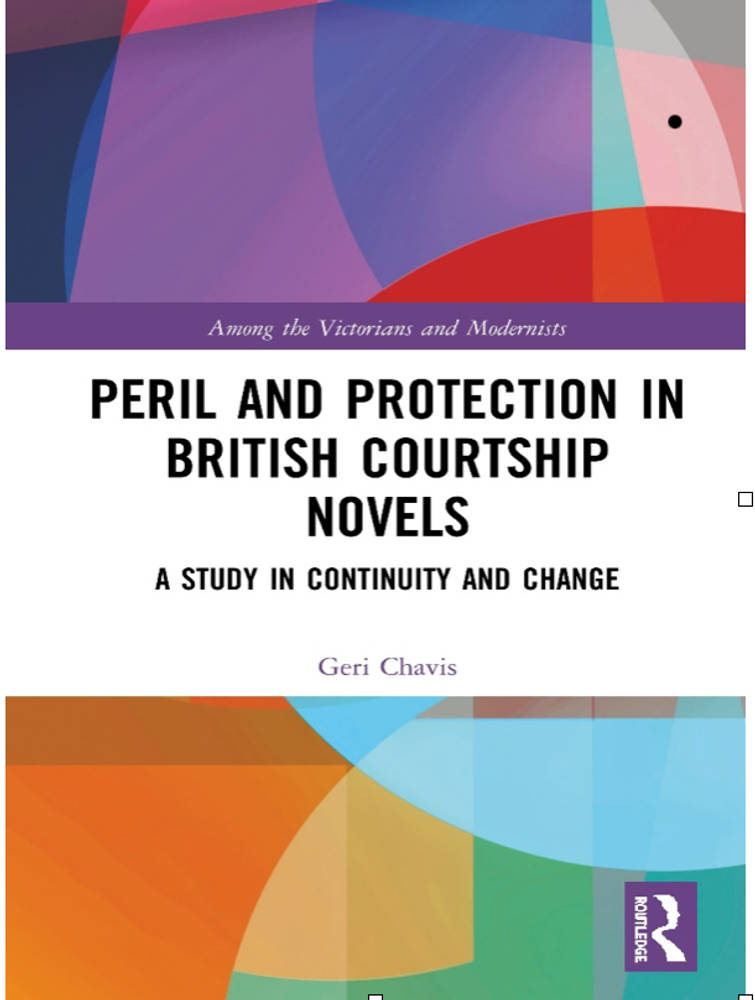Want to know how to navigate the Victorian Web? Click here.
The author has kindly shared the following passage from her forthcoming Routledge book, Peril and Protection in British Courtship Novels A Study in Continuity and Change. — George P. Landow


n courtship novels of the Victorian period from the late 1840s through the 1890s, we see increasing complexity in the portrayal of the safety-danger-protection issue for courting couples. This complexity reflects both recognition and significant questioning of established gender ideology. Five major Victorian novelists make the courtship story paramount. Particularly striking in these works by Charlotte Brontë, Elizabeth Gaskell, Charles Dickens, George Eliot, and Thomas Hardy are gender role reversals, involving deeply flawed or deficient heroes whose promises of protection ring hollow, and heroines who engage in daring rescues of the men they love. In spite of these reversals, men and women in these Victorian novels still operate within a world where established gender norms are upheld, male privilege prevails, and the guarding of a woman’s reputation is serious business. Self-sacrifice is a cherished ideal for female behavior, and the chivalric protection code remains an expressed expectation for male behavior. The courtship scenarios explored here are also profoundly affected by two divergent beliefs about women: they are the weaker sex in terms of their emotional and physical state; and they are morally superior beings, who are expected to function as men’s spiritual guardians, ensuring the sanctity of the home and moral well-being of family members.
Aurora Leigh, the eponymous heroine of Elizabeth Barrett Browning’s 1853 courtship novel-poem, suggests the degree to which traditional and changing gender norms tend to intertwine during the Victorian period. Planning to “save” the poem’s hero, Romney “from a devil’s company” even if she would have to “undo” herself, Aurora vehemently sums up her role as woman in these terms:
We’re all so—made so—‘tis our woman’s trade
To suffer torment for another’s ease.
The world’s male chivalry has perished out,
But women are knights-errant to the last. [Book VII, lines 222–225, 229]
While the poetic form for Browning’s novel is unique, prose serialized novels were enormously popular during the Victorian period, and their range, as Francis O’Gorman points out, reflects an “energetic variety” (2). Despite the capacious scope of their works, Victorian novelists sustain the courtship framework as a defining marker of the novel genre. Although they usually tackle a wide variety of social, political, and economic issues, these novelists retain a primary love interest involving major characters. Michael Wheeler points out that despite an expansive degree of content and tendency toward multiple plots in Victorian novels, “courtship and marriage remained the main staple of plotting in fiction throughout the Victorian age” (80). Tom Winnifrith suggests that courtship as well as seduction permeates Victorian novels when he writes, “Victorian novelists were interested in all aspects of human life, of which human sexuality is clearly an important part, if not the most important” (146).
Two popular subgenres generated during the Victorian period, which incorporated the courtship narrative, are the social problem novel and the bildungsroman or coming-of-age novel. According to O’Gorman, “social problem novels” were particularly characteristic of the early Victorian period and primarily “exposed the shortcomings of modern industrial society” (149). Within the latter part of the nineteenth century, these novels of social consciousness increasingly address women’s struggles against rigid standards of ideal feminine behavior. The other prominent Victorian novel form, acknowledged by William Marshall and Randall Stevenson, focuses on the development of a male or female protagonist from childhood days to adulthood. Joseph Boone emphasizes the tie between these coming-of-age novels and courtship/marriage narratives when he notes that “most fictional expositions of love have to some degree followed the time-honored form of the bildungsroman, for the story of a youth’s progress from innocence to adulthood . . . is often marked by the vicissitudes and trials of love” (74).
The courtship novels explored here build on the social and psychological realism of Jane Austen’s fiction as they engage with challenging social issues of the day. In many of these works, a seduction plot provides a minor counterpoint to the major narrative involving the male and female protagonist. As Joseph Boone points out, Victorian novelists were in general content to incorporate seduction into their texts as admonitory subplots . . . Its secondary status as such could thus ‘safely’ be used to enhance the exemplary status and appeal of the wedlock ideal touted in the narrative’s major development” (113). Talia Schaffer frames the link between seduction and courtship themes in different terms. She distinguishes between the safe or “familiar” suitor and the more mysterious, dangerous, “romantic” suitor (7) and views the prevalence of a rivalry pattern between these character types as a way to help Victorian readers work out a balance between features of the practical, secure marriage and the “the newly dominant idea” of the passionate “romantic marriage” (8). While the enduring wedlock ideal strongly induces Victorian novelists to maintain the happily-ever-after ending that often melds features of what Schaffer designates as familiar and romantic, authors such as Thomas Hardy, in particular, openly resist this pull.
Table of Contents
- Introduction: Danger, Protection, and Gender Ideology in Courtship Novels
- Establishing the Traditional Courtship Novel in the Eighteenth Century: Haywood, Richardson, & Burney
- Intensifying Tradition: Gothic Courtship Novels of Walpole and Radcliffe
- Enriching and Mocking Tradition: Ironic Variations in Austen’s Courtship Novels
- Flawed Heroes and Rescuing Heroines: Victorian Challenges and Adherence to Tradition
- Combatants, Soul Mates, and Risky Ventures: Modernist Deconstructions of Courtship Novel Danger in the Late Nineteenth and Early Twentieth Century
- Reflections on Continuity, Change, and Contemporary Trends in Courtship Fiction
Last modified 10 June 2020